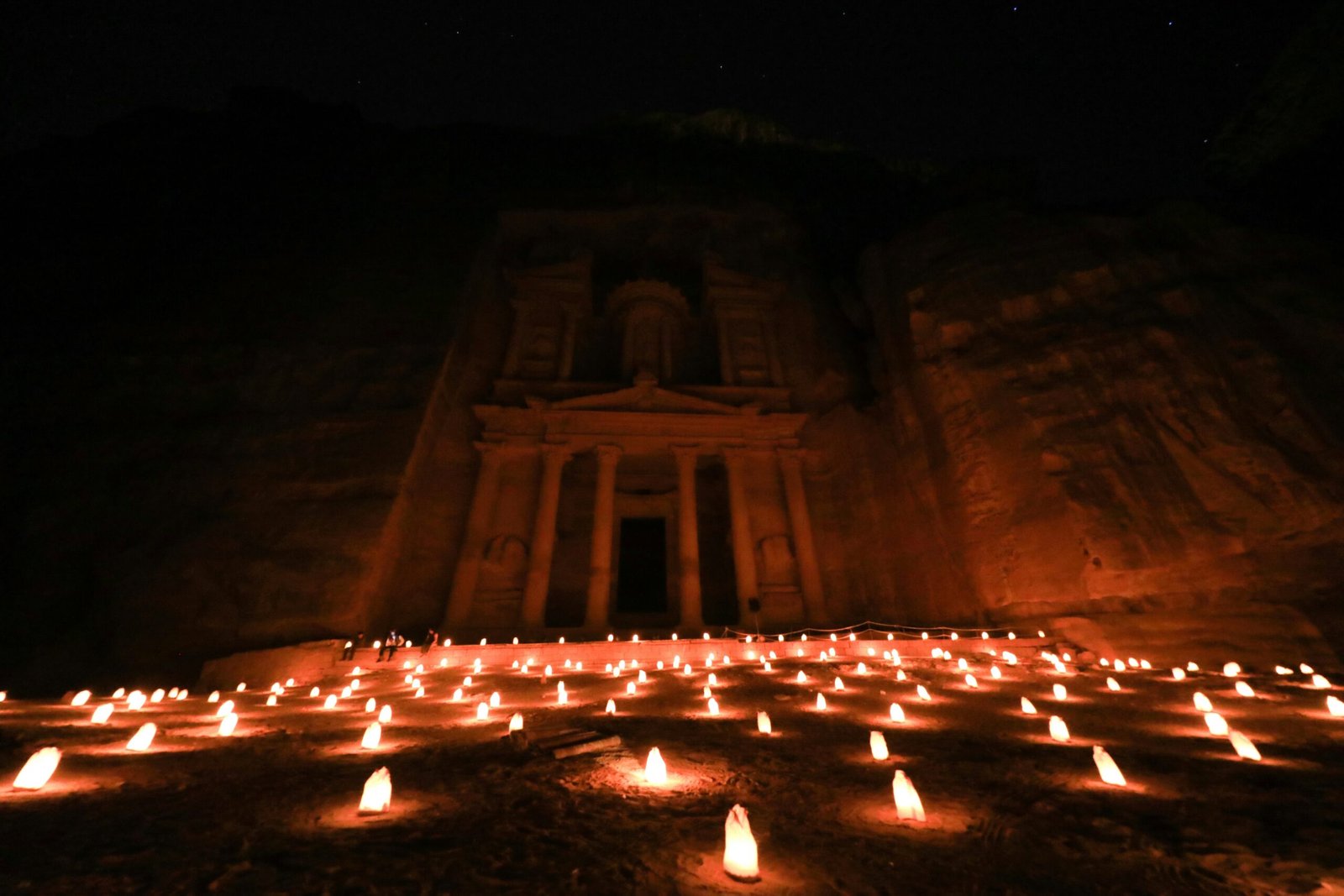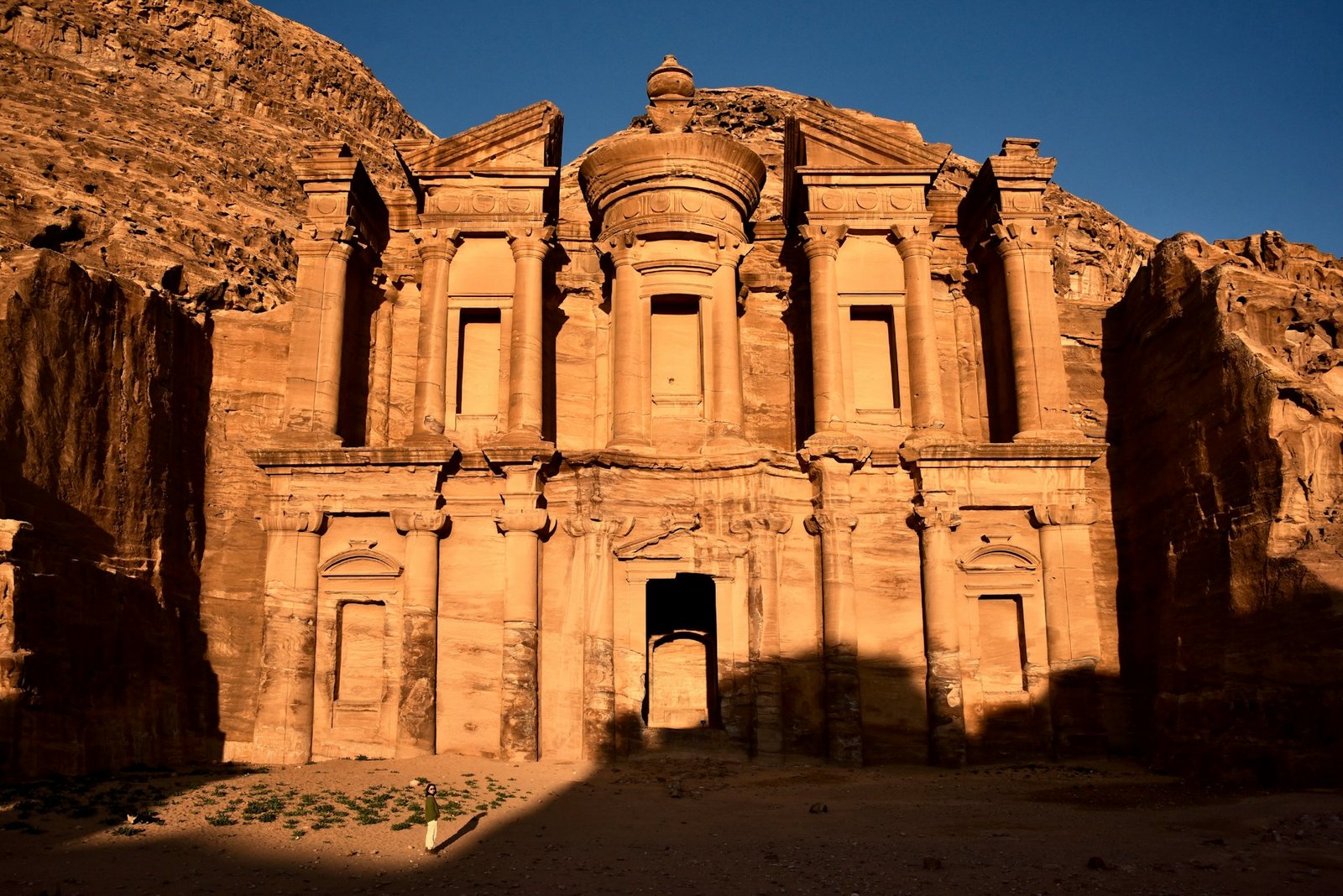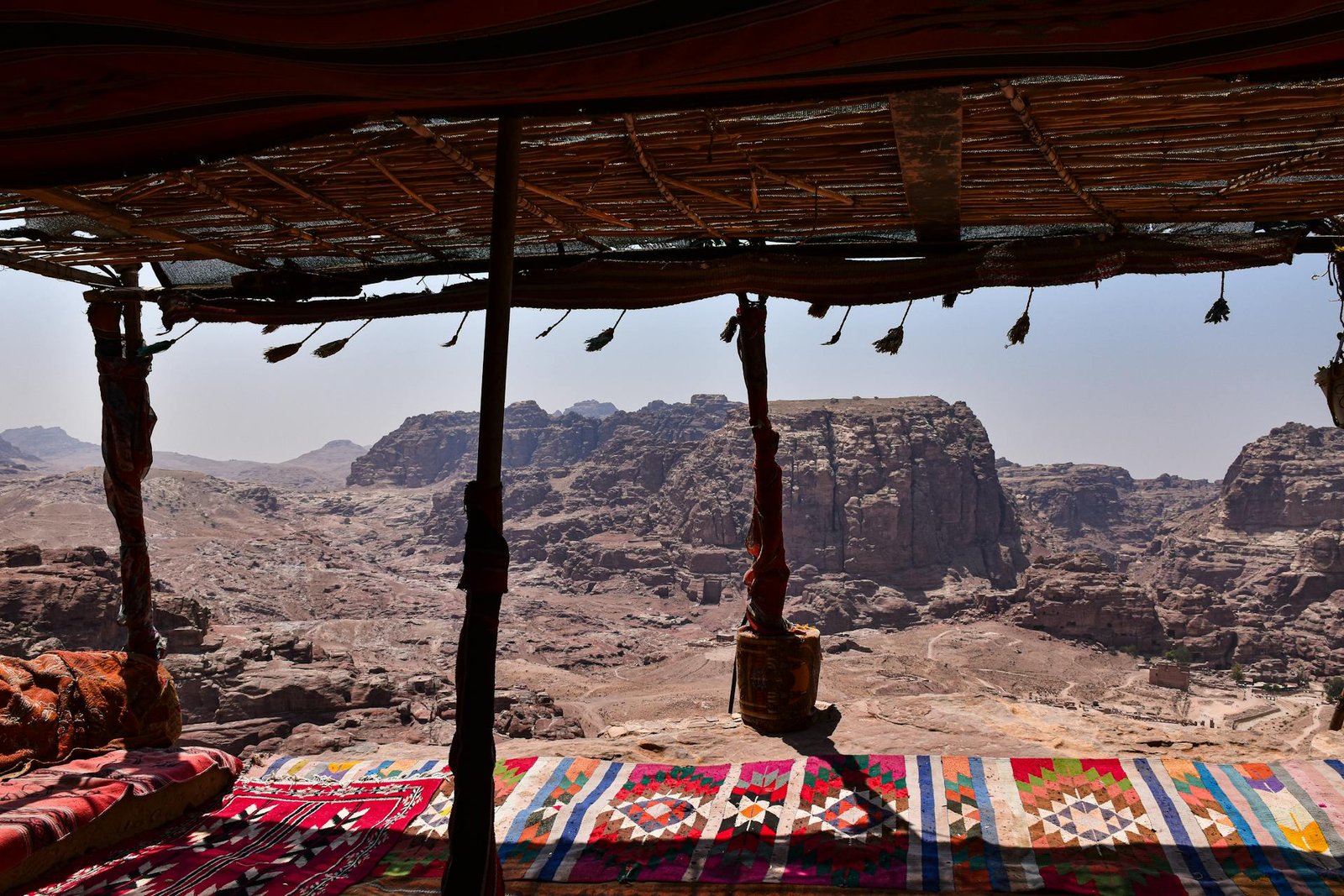The origins of Al-Khazneh are steeped in mystery, though it is often thought to have served as a royal tomb or a temple. Its monumental size and elaborate decoration reflect the wealth and power of the Nabateans during this period. The approach to Petra involves a narrow canyon known as the Siq, which dramatically opens up to reveal Al-Khazneh’s stunning façade, presenting a breathtaking sight that leaves visitors in awe. The seamless transition from the secluded Siq to the expansive site of Petra, where Al-Khazneh resides, enhances the mystical experience of exploring this ancient city.
An Introduction to Petra and Al-Khazneh
Designated as a UNESCO World Heritage Site in 1985, Petra continues to captivate visitors with its historical and cultural importance. It attracts travelers from across the globe who wish to explore its temple-like structures, tombs, and monuments. The iconic façade of Al-Khazneh, commonly referred to as The Treasury, stands as the most famous symbol of Petra. This grand structure, believed to date back to the 1st century AD, is intricately carved into the sandstone cliffs and showcases the exceptional craftsmanship of its creators.
The Journey through the Siq
As travelers set out on their journey to visit Petra, they encounter the Siq, a narrow gorge that serves as the main entrance to this ancient city. The Siq stretches approximately one kilometer and is flanked by towering cliffs that rise dramatically, creating a sense of awe and anticipation. The play of sunlight on the rocks reveals a stunning array of colors, from warm reds and browns to cool purples and yellows, the geological formations creating a visually captivating tapestry that enhances the trek through the gorge.
Walking through the Siq is more than just a physical experience; it is a symbolic passage that invokes the spirit of ancient travelers who once made their way toward the magnificent Petra Al-Khazneh, known as the Treasury. For these early explorers, the Siq represented a gateway to discovery, a transition from the mundane to the extraordinary. This feeling is palpable for modern visitors, evoking a shared connection to a rich history and a profound sense of wonder.
Along the route, remnants of ancient Nabatean craftsmanship can be observed, with carvings etched into the rock walls hinting at the artistry and sophistication of a bygone era. Water channels and cisterns carved into the stone reflect the ingenious engineering abilities of the Nabateans, showcasing their adaptation to the arid environment. As one progresses deeper into the Siq, echoes of civilization resonate within the cleft—a reminder of the bustling trade routes that once thrived, drawing merchants and travelers from far and wide to Petra.
As visitors emerge from the Siq and the breathtaking sight of Petra Al-Khazneh comes into view, the anticipation cultivated during the passage reaches its peak. This journey through the Siq is not merely a path to the Treasury; it is a transformative experience that elevates the entire visit, enhancing the lasting impression of one of the most iconic landmarks in history.
Architectural Marvels of Al-Khazneh
Al-Khazneh, often referred to as The Treasury of Petra, stands as a testament to the extraordinary craftsmanship and architectural innovation of the Nabataeans. Carved directly into the rose-red cliffs of the Petra valley, its façade exhibits a stunning blend of Hellenistic and Eastern architectural styles, creating a unique visual experience that attracts countless visitors each year. As one embarks on a Petra group tour, the striking features of Al-Khazneh captivate the imagination, compelling a closer examination of its intricate details.
The façade of Al-Khazneh is adorned with elaborate carvings, showcasing motifs that reflect both cultural influences and the mastery of stonework. Notably, the urn situated at the top of the structure has sparked various interpretations, with theories suggesting it might be a symbol of wealth or possibly a burial site for a significant figure in ancient times. The impressive height and elaborate columns emphasize the grandeur of the structure, while the mix of classical and local artistic elements highlight the cultural exchange that was prevalent in the region.
Both the monumental scale and the intricate design elements bear deep symbolic meanings. The numerous sculptures that grace the façade, including those depicting mythological figures, signify the spiritual and cultural beliefs of the Nabataeans. However, there remains an ongoing debate regarding the original purpose of Al-Khazneh. Some scholars argue that it served as a tomb, given its elaborate design, while others maintain that it functioned as a temple or treasury. This ambiguity only adds to the allure of Al-Khazneh as a focal point for explorers who visit Petra, eager to unravel the mysteries that lie within its ancient stone walls.
Al-Khazneh in Popular Culture
Al-Khazneh, commonly known as the Treasury of Petra, has etched itself into the annals of popular culture, serving as a canvas for filmmakers, authors, and artists seeking to evoke a sense of adventure and mystery. This stunning archaeological masterpiece first gained widespread recognition through its prominent role in the film “Indiana Jones and the Last Crusade”. In this cinematic classic, the Treasury is not merely a backdrop but a pivotal part of the narrative, symbolizing the quest for knowledge and the thrill of exploration. As audiences experienced Indiana’s thrilling escapades within this iconic structure, their fascination with Petra surged, leading many to visit Petra in hopes of glimpsing its grandeur firsthand.
Documentaries have similarly showcased Al-Khazneh, deepening the public’s understanding of its historical and cultural significance. Programs such as “Ancient Aliens” and various travel series have highlighted not only the architectural brilliance of the Treasury but also the rich, complex narratives surrounding the Nabatean civilization that constructed it. This portrayal bolsters the perception of Petra as an emblem of human ingenuity and resilience against the backdrop of Jordan’s arid landscape.
In literature, Al-Khazneh often serves as a metaphor for lost treasures and the quest for truth, reinforcing its status as a symbol of discovery. The treasure hunting genres frequently feature Petra to illustrate the timeless allure of exploring unknown realms, capturing the imagination of readers and travelers alike. This interconnected portrayal in various media has undoubtedly influenced tourism, encouraging countless individuals to embark on a Petra group tour, driven by the desire to walk in the footsteps of legendary adventurers. Through these dynamic representations in modern media, Al-Khazneh has transcended its ancient origins, becoming a universal symbol of adventure and exploration.



